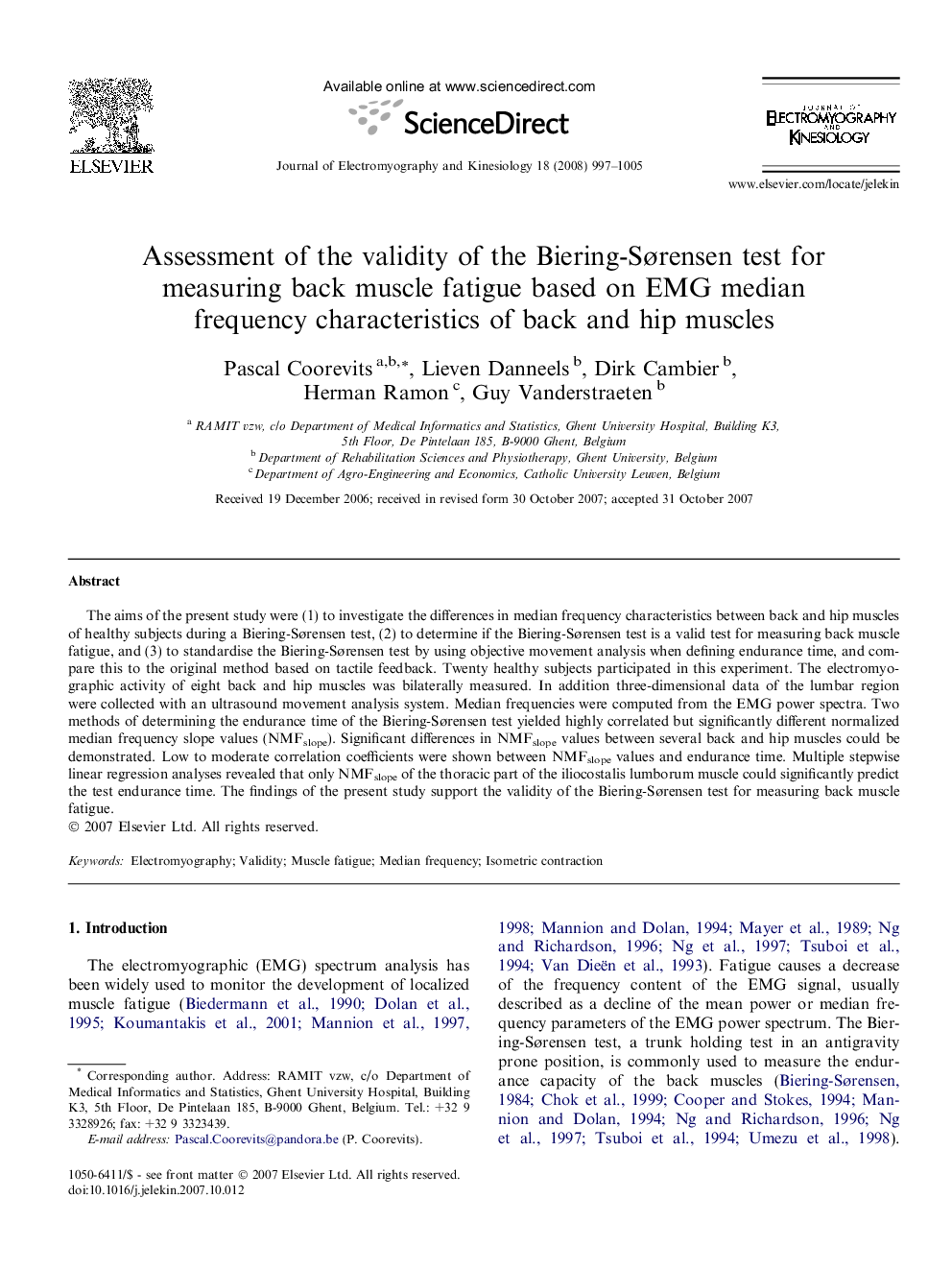| Article ID | Journal | Published Year | Pages | File Type |
|---|---|---|---|---|
| 4065655 | Journal of Electromyography and Kinesiology | 2008 | 9 Pages |
The aims of the present study were (1) to investigate the differences in median frequency characteristics between back and hip muscles of healthy subjects during a Biering-Sørensen test, (2) to determine if the Biering-Sørensen test is a valid test for measuring back muscle fatigue, and (3) to standardise the Biering-Sørensen test by using objective movement analysis when defining endurance time, and compare this to the original method based on tactile feedback. Twenty healthy subjects participated in this experiment. The electromyographic activity of eight back and hip muscles was bilaterally measured. In addition three-dimensional data of the lumbar region were collected with an ultrasound movement analysis system. Median frequencies were computed from the EMG power spectra. Two methods of determining the endurance time of the Biering-Sørensen test yielded highly correlated but significantly different normalized median frequency slope values (NMFslope). Significant differences in NMFslope values between several back and hip muscles could be demonstrated. Low to moderate correlation coefficients were shown between NMFslope values and endurance time. Multiple stepwise linear regression analyses revealed that only NMFslope of the thoracic part of the iliocostalis lumborum muscle could significantly predict the test endurance time. The findings of the present study support the validity of the Biering-Sørensen test for measuring back muscle fatigue.
